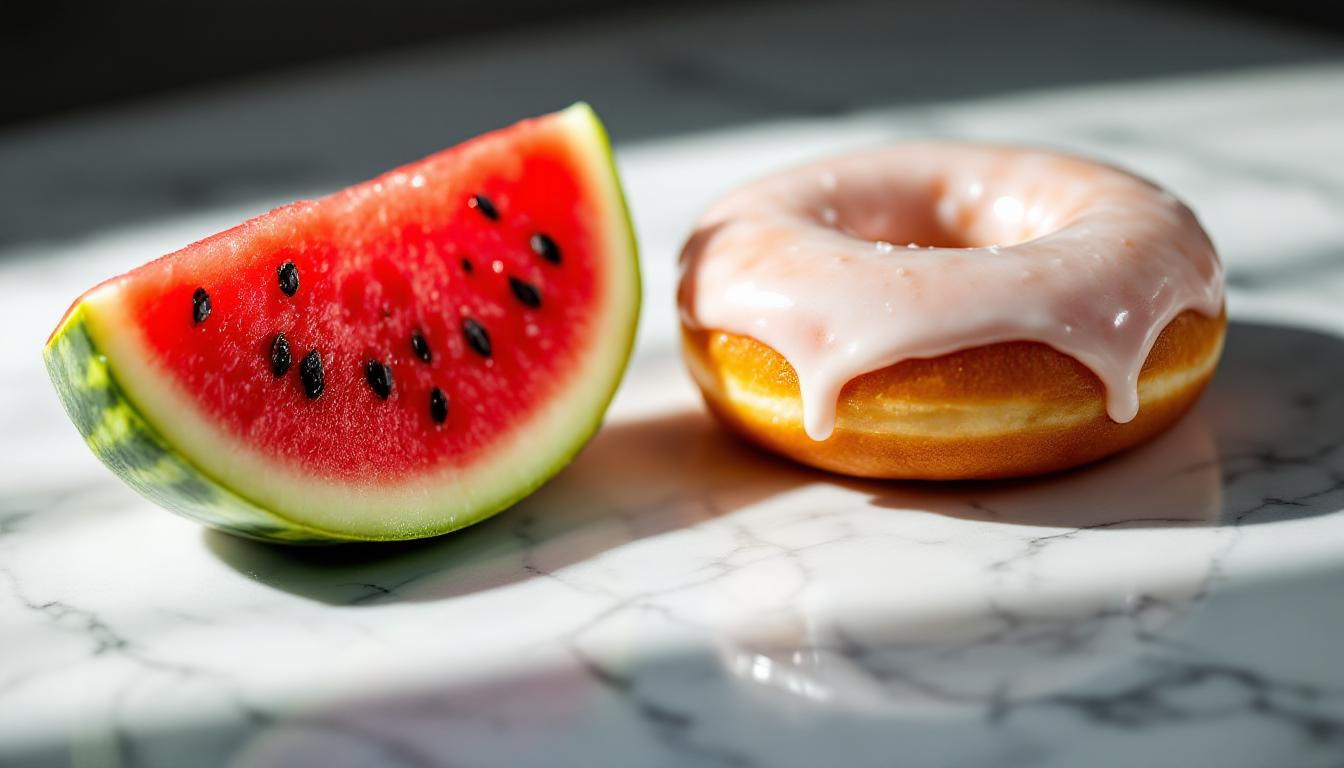We often reach for fruit as a healthy alternative to sugary treats, but did you know some fruits can spike your blood sugar even more dramatically than a donut? This surprising revelation has many health-conscious individuals rethinking their snack choices. Let’s dive into the science behind this counterintuitive health discovery.
The unexpected fruit with a higher glycemic impact than donuts
When it comes to blood sugar spikes, watermelon tops the list of surprising culprits. With a glycemic index (GI) of 72-76, watermelon can trigger blood sugar elevations comparable to a glazed donut, which typically has a GI of 75-76.
“What most people don’t realize is that watermelon contains rapidly digestible carbohydrates that enter the bloodstream quickly,” explains Dr. Lisa Martinez, registered dietitian at Wellness Central Clinic. “This can cause a dramatic spike in blood glucose levels, particularly in individuals with insulin sensitivity issues.”
Understanding the glycemic index: more than just sugar content
The glycemic index measures how quickly foods cause blood sugar levels to rise. Foods are ranked on a scale of 0-100, with higher numbers indicating faster blood sugar spikes:
- Low GI: 55 or less
- Medium GI: 56-69
- High GI: 70 or higher
Surprisingly, some fruits fall into the high category alongside processed sweets. While a donut’s high GI is expected, finding fruits in this category catches many health enthusiasts off guard.
Not just watermelon: other high-GI fruits to watch
Watermelon isn’t alone in its blood sugar-spiking potential. Several other fruits can cause similar effects:
- Lychee (GI: 79)
- Cantaloupe and other melons (GI: ~72)
- Pineapple (GI: 66)
“I had a patient who was diligently avoiding processed foods but couldn’t understand why her blood sugar remained unstable,” shares Dr. Robert Chen, endocrinologist. “When we discovered she was consuming large portions of watermelon daily, thinking it was a healthy choice, we identified the problem.”
The glycemic load factor: why portion size matters
While the glycemic index tells part of the story, dietitians emphasize the importance of glycemic load (GL), which accounts for serving size. Despite watermelon’s high GI, a typical serving contains relatively few carbohydrates, resulting in a lower GL than a donut.
This resembles the way a match and a bonfire both burn at the same temperature, but the bonfire releases significantly more heat due to its size. Similarly, a small portion of high-GI fruit may impact blood sugar less than a donut with more total carbohydrates.
Strategic fruit consumption for blood sugar management
For those monitoring blood sugar levels, consider these expert-recommended strategies when enjoying fruit:
Pair high-GI fruits with protein or healthy fats to slow digestion. For example, enjoy watermelon with a handful of nuts or seeds, similar to other nutrient-dense snack combinations.
Be mindful of portion sizes, especially with dried fruits like dates, which can cause significant blood sugar elevations similar to high-sugar confections.
When fruits trigger unexpected health issues
Some individuals experience pronounced reactions to certain fruits. One such case involves mangoes causing elevated uric acid levels, demonstrating how even natural foods can sometimes trigger adverse health effects.
The timing of fruit consumption also matters. Like the interaction between caffeine and carbohydrates, consuming high-GI fruits on an empty stomach can lead to energy crashes later.
Finding balance in your fruit consumption
Does this mean we should avoid watermelon and other high-GI fruits? Not necessarily. Nutritional balance remains key. Fruits provide essential vitamins, minerals, and antioxidants that benefit overall health.
“The key is diversity and moderation,” says nutritionist Emma Wilson. “Include a variety of fruits in your diet, especially those with lower GI values like berries, apples, and pears, while enjoying high-GI fruits in controlled portions.”
Understanding how different foods affect your body is the first step toward making informed dietary choices. Rather than eliminating fruits, consider how they fit into your overall nutrition plan, especially if you’re among those seeking alternatives to high-cortisol beverages and other dietary concerns.
